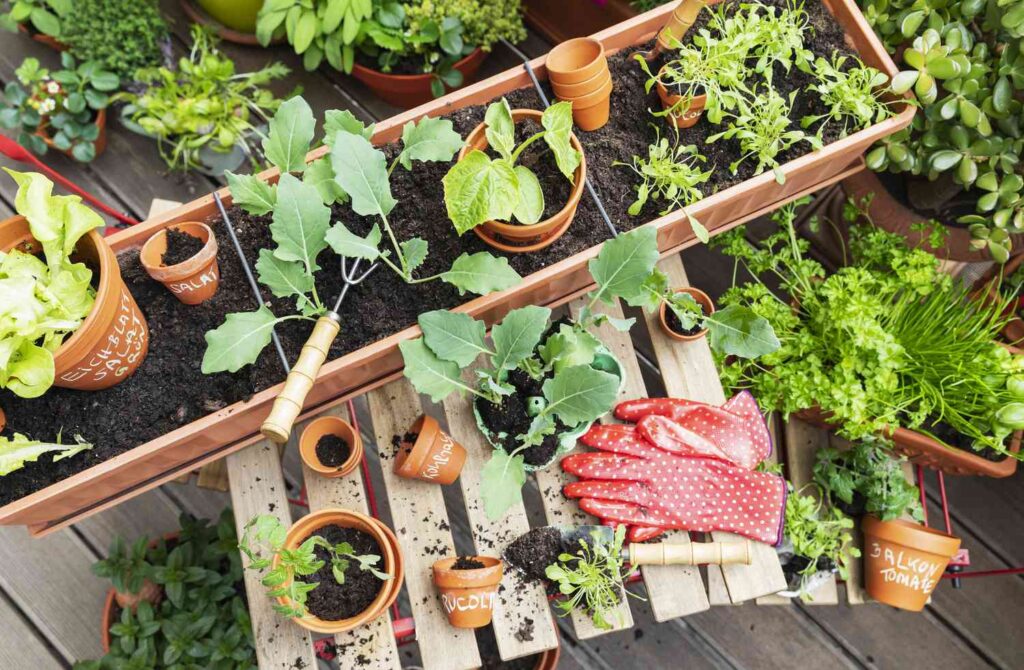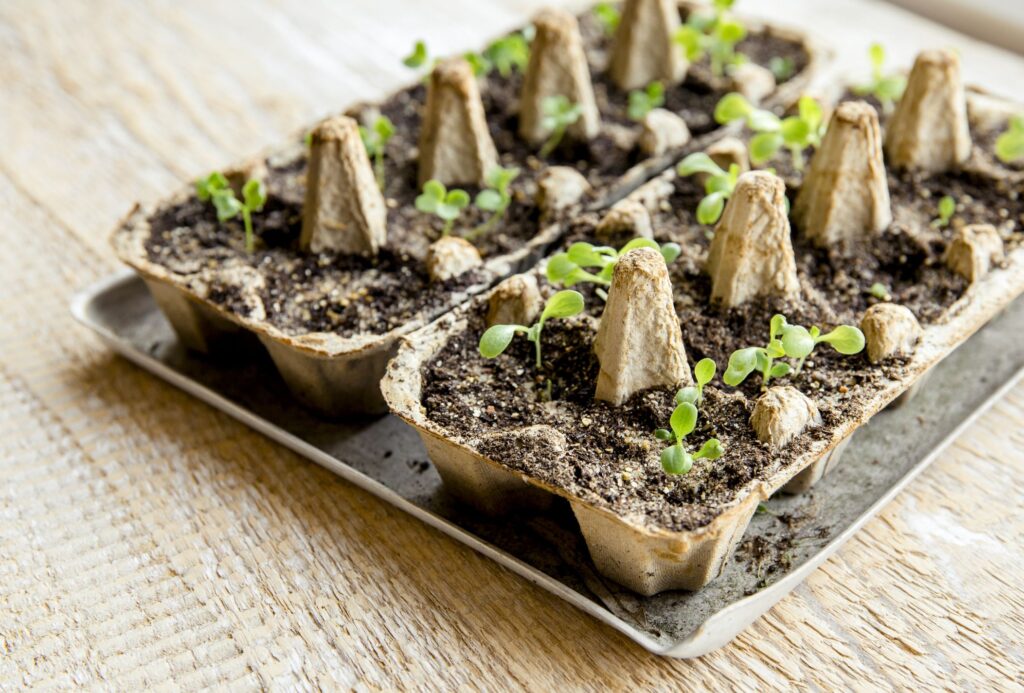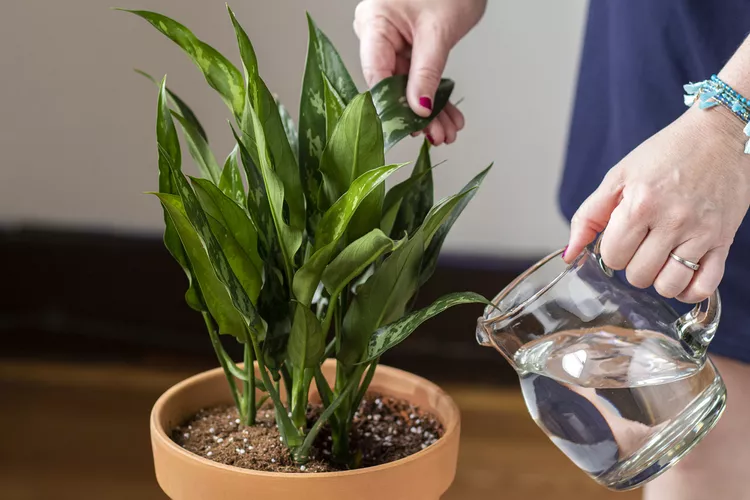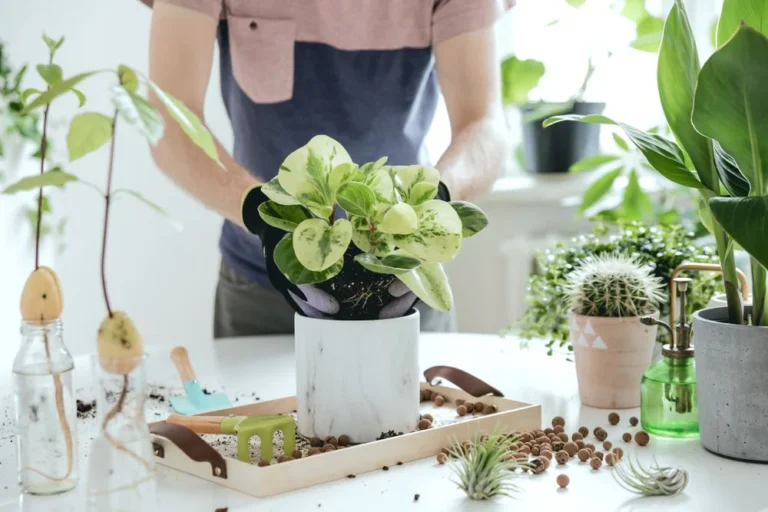Contents
Introduction
Spring is a time of renewal and growth, not just for nature, but for your apartment garden too. As the cold, dark days of winter give way to longer, warmer days, your plants are ready to wake up and thrive. But just like us, they need a little help to make the most of this fresh start. Whether you’re growing herbs on a windowsill, flowers on a balcony, or vegetables in containers, spring is the perfect time to give your apartment garden some extra TLC.
Why is spring care so important? Well, after months of reduced light and cooler temperatures, your plants might be a little sluggish, and your garden space could use some refreshing. This season is all about getting things in shape for a lush and productive growing period ahead. By taking the right steps now, you’ll set your plants up for success, leading to healthier growth, more blooms, and a bountiful harvest.
Apartment gardening comes with its own set of challenges. Limited space, less natural light, and the need for creative solutions to keep plants happy can make things tricky. But with a little planning and some smart care tips, you can turn even the smallest balcony or window into a thriving green oasis. Whether you’re a seasoned gardener or just starting out, this spring plant care checklist will guide you through everything you need to do, step by step.
In this guide, we’ll cover all the essential tasks to get your apartment garden ready for spring. We’ll talk about how to prepare your space, choose the right plants, and provide the care they need to grow strong. We’ll also tackle common issues that might pop up and offer solutions to keep your plants healthy. By the end, you’ll have a garden that’s ready to burst into life, no matter how small your space is.
So, grab your gardening gloves and let’s dive into the world of spring plant care for apartment gardeners! Whether you’re looking to start something new or give your existing garden a boost, this checklist has got you covered.
Preparing Your Apartment Garden for Spring
Before you start planting and watching your garden grow, it’s important to take some time to prepare your space. Think of it like spring cleaning for your garden—clearing out the old, making room for the new, and setting the stage for a successful growing season. Whether you’re working with a balcony, a windowsill, or a small patio, these preparation steps are essential to ensure your plants have the best environment to thrive in.

Assessing Your Garden Space
First things first, take a good look at your garden space. Understanding your environment is key to choosing the right plants and planning how to arrange them. Start by evaluating the light conditions. Notice which areas get direct sunlight and which spots are more shaded throughout the day. Light is crucial for plant growth, and knowing where your sunniest spots are will help you decide what to plant where.
Next, check for space constraints. Measure the areas where you plan to place your pots or containers. If you’re short on horizontal space, think about going vertical with shelves, hanging baskets, or trellises. Vertical gardening is a great way to maximize your space and add more greenery without cluttering your floor.
Lastly, inspect your planters and containers. Over the winter, they might have collected dirt, grime, or even pests. Give them a good cleaning and disinfecting to ensure they’re ready for new plants. This simple step can prevent diseases and create a healthier environment for your garden.
Refreshing Soil and Fertilizers
Soil is the foundation of any garden, and after a season of use, it might be time to give it a refresh. Start by testing your soil’s health. You can pick up a simple pH test kit from a garden center to check if the soil is still in the right condition for your plants. Healthy soil is crucial for plant growth, so it’s worth taking a few minutes to test it.
If the soil seems depleted or you notice it’s compacted and dry, it’s time to amend it. Adding organic materials like compost or peat can rejuvenate your soil, improving its texture and nutrient content. This will give your plants a better environment to grow in, with the nutrients they need to flourish.
Choosing the right fertilizer is another important step. Fertilizers come in different types—organic vs. synthetic, slow-release vs. liquid—and each has its own benefits. For apartment gardeners, slow-release fertilizers can be particularly useful, as they provide nutrients over time, reducing the need for frequent feeding. Make sure to pick a fertilizer that matches the needs of the plants you plan to grow, whether it’s herbs, vegetables, or flowers.
Planning Plant Selection
With your space ready and your soil refreshed, it’s time to think about what you want to grow. Start by researching plant varieties that are well-suited for apartment gardening. Herbs like basil and mint, small vegetables like cherry tomatoes, and flowers like petunias or marigolds are all great options for small spaces.
Creating a planting schedule is also important. Align your planting with the last frost date in your region to avoid cold damage to young plants. Some plants may need to be started indoors before moving them outside, while others can be sown directly into containers.
Lastly, consider companion planting. This is the practice of growing plants together that benefit each other. For example, planting basil next to tomatoes can improve the flavor of the tomatoes and help deter pests. Companion planting can help you make the most of your space and keep your garden healthy and productive.
By taking these steps to prepare your apartment garden, you’re setting up a strong foundation for the growing season. With your space optimized, your soil ready, and your plant choices planned, you’ll be well on your way to a thriving garden that will bring color, flavor, and joy to your apartment all spring long.
Planting and Repotting
Now that your apartment garden is all set up and ready to go, it’s time to dive into planting and repotting. This is where the magic starts—watching those tiny seeds or seedlings grow into lush, vibrant plants. Whether you’re starting seeds indoors, repotting your existing plants, or sowing directly into your outdoor containers, these steps will help you get the best results.
Starting Seeds Indoors
Starting seeds indoors can be a fun and rewarding way to get a jumpstart on your garden. First, choose seeds that are well-suited for indoor starting. Look for varieties with high germination rates and those that are known to do well in container gardens. You’ll find plenty of options at garden centers or online.

Set up a seed-starting station in a sunny spot or under grow lights. Plants need plenty of light to germinate and grow strong, so make sure they’re getting enough. Using a heat mat can help maintain a consistent temperature, which is crucial for seedling development. Keep the soil moist but not waterlogged, and be patient—germination times can vary.
Once your seedlings are big enough and have developed a few sets of leaves, it’s time to transplant them into larger containers. This helps prevent them from becoming root-bound and allows them to continue growing strong. Be gentle when handling seedlings to avoid damaging the delicate roots.
Repotting and Dividing Plants
Repotting is a key part of plant care, especially for those growing in containers. Plants need more space as they grow, so it’s important to know when it’s time to upgrade to a larger pot. Signs that your plants need repotting include roots growing out of the drainage holes, slow growth, or soil that dries out too quickly.
When repotting, choose a pot that’s just a size larger than the current one. Gently remove the plant from its old pot, trim any overly long or tangled roots, and place it in the new container with fresh potting mix. Water thoroughly and place it in a location where it can adjust to its new home.
For perennials and bulbs, dividing is another useful technique. Over time, some plants become overcrowded and their growth slows down. Dividing them can help rejuvenate the plants and promote healthier growth. Dig up the plant, separate the bulbs or root clumps, and replant them in fresh soil.
Direct Sowing Outdoors
If you’re planting directly into outdoor containers or garden beds, start by choosing the right planters. Ensure they have good drainage to prevent waterlogging, which can lead to root rot. Window boxes, balcony planters, and hanging baskets are all great options for apartment gardens.
When sowing seeds directly, follow the instructions on the seed packet for planting depth and spacing. Planting too close together can lead to overcrowding, so make sure to give each seed or seedling enough room to grow. Thin out seedlings if necessary to ensure they have enough space to develop properly.
Caring for young plants is crucial for their success. Protect them from harsh weather conditions by using row covers or moving them to a sheltered spot if needed. Regular watering is important, but avoid overwatering as this can lead to root problems. Keep an eye out for pests and diseases, and address any issues promptly.
By following these planting and repotting tips, you’ll give your apartment garden a strong start. Watching your seeds grow into healthy plants and seeing your repotted plants thrive will be incredibly satisfying and set the stage for a vibrant and productive gardening season.
Maintenance and Care Throughout Spring
With your plants in place and growing well, the next step is to focus on ongoing maintenance and care. Spring is a time of active growth, and keeping your plants healthy requires regular attention. This section will guide you through the essential tasks to ensure your apartment garden thrives throughout the season.
Watering Techniques
Watering is one of the most crucial aspects of plant care, and getting it right can make all the difference. Start by establishing a proper watering schedule based on your plants’ needs, container size, and the weather. Most plants prefer to dry out slightly between waterings, so avoid watering too frequently.

To prevent overwatering, check the soil moisture before adding more water. Stick your finger about an inch into the soil; if it feels dry, it’s time to water. Overwatering can lead to root rot and other problems, so it’s important to strike the right balance.
Efficient watering methods can help make the process easier. Bottom watering, where you place the pot in a tray of water and let the soil soak up what it needs, is a great way to ensure even moisture. Drip irrigation systems can also be handy, especially for larger setups, as they provide a steady, controlled amount of water. Self-watering containers are another convenient option, reducing the need for frequent manual watering.
Fertilizing and Feeding
Fertilizing is essential for providing your plants with the nutrients they need to grow strong and healthy. Spring is a great time to start, as your plants are coming out of their winter dormancy and need a boost to support their active growth.
Timing and frequency of fertilization are key. Start by applying a balanced fertilizer when you see new growth beginning. Follow the instructions on the fertilizer package for the right amount and frequency. Over-fertilizing can be harmful, so it’s better to apply less and adjust as needed.
Different plants have different nutritional needs, so choose a fertilizer that suits the type of plants you’re growing. For instance, herbs may need less fertilizer compared to vegetables, which often require more nutrients to produce a good harvest. Foliar feeding, or applying fertilizer directly to the leaves, can also be beneficial, especially for plants that are not responding well to soil-based fertilizers.
Pruning and Deadheading
Pruning and deadheading are important for maintaining the health and appearance of your plants. Pruning helps control the shape and size of your plants, promotes better airflow, and encourages new growth. Remove any dead or damaged leaves and stems, and trim back any overly long branches.
Deadheading, or removing spent flowers, is a technique that encourages plants to produce more blooms. By cutting off flowers that have already faded, you help the plant focus its energy on new buds. Regular deadheading can keep your flowers looking fresh and vibrant throughout the season.
Pinching back is another useful practice, especially for plants that become leggy or spindly. Pinching back the tips of the stems encourages a bushier growth habit, resulting in a fuller, more compact plant.
Pest and Disease Management
Keeping an eye out for pests and diseases is crucial for a healthy garden. Spring can bring a variety of pests like aphids, spider mites, and fungus gnats. Regularly inspect your plants for signs of infestation, such as discolored leaves, holes, or sticky residue.
Managing pests organically is often the best approach for apartment gardeners. Natural remedies like neem oil, insecticidal soap, or garlic sprays can help keep pests in check without harmful chemicals. Encourage beneficial insects like ladybugs, which prey on harmful pests.
Preventing diseases is equally important. Good air circulation around your plants, proper watering techniques, and choosing disease-resistant varieties can help reduce the risk of fungal and bacterial infections. If you do spot a problem, act quickly to address it—remove affected plant parts, improve ventilation, and consider organic treatments if necessary.
By staying on top of watering, fertilizing, pruning, and pest management, you’ll ensure your apartment garden remains lush and vibrant throughout spring. Consistent care will help your plants flourish and make your gardening experience enjoyable and rewarding.
Troubleshooting Common Spring Gardening Issues
Even with the best care, you might encounter some common issues in your apartment garden during spring. Don’t worry—these problems are usually fixable with a bit of know-how. This section will help you identify and solve common gardening issues, so you can keep your plants happy and healthy.
Dealing with Leggy Seedlings
If your seedlings are stretching out and looking spindly, they might be “leggy.” This typically happens when plants don’t get enough light. Leggy seedlings have long, weak stems as they reach for the light, which can lead to weak, unhealthy plants.
To prevent legginess, make sure your seedlings are getting enough light. If you’re using grow lights, position them close to the seedlings, but not so close that they cause heat stress. Adjust the height of the lights as the seedlings grow. If your plants are growing too tall and spindly, you can gently pinch off the top of the seedlings to encourage a bushier growth habit and then transplant them deeper into the soil to support the leggy stems.
Managing Overcrowded Planters
Overcrowding is a common issue in small-space gardening. When plants are too close together, they compete for light, water, and nutrients, which can lead to stunted growth and increased risk of disease.
To manage overcrowded planters, regularly check your plants for signs of crowding, such as overlapping foliage or slow growth. Thin out seedlings or mature plants to give each one enough space. If necessary, transplant some of the plants to larger containers or new locations. For plants that spread out significantly, consider using vertical space or adding more planters to better utilize your available area.
Adjusting to Late Frosts or Cold Snaps
Spring weather can be unpredictable, and late frosts or sudden cold snaps can catch gardeners off guard. Cold temperatures can damage or kill tender plants that are not acclimated to sudden drops in temperature.
To protect your plants from unexpected cold, keep an eye on weather forecasts and be prepared to take action if a frost is predicted. Use row covers or cloches to shield your plants from frost. For container plants, move them indoors or to a more sheltered spot if possible. If frost does damage your plants, trim off any severely affected parts and allow the plant to recover. Gradually reintroduce it to outdoor conditions once the weather stabilizes.
By addressing these common issues with practical solutions, you can keep your apartment garden thriving despite the occasional setback. Troubleshooting and solving these problems will help you maintain a vibrant and healthy garden throughout the spring season.
Preparing for Summer
As spring comes to a close, it’s time to start thinking about how to transition your apartment garden into the summer months. Preparing for the warmer weather involves making adjustments to care routines, planning for new plantings, and ensuring that your garden continues to thrive as temperatures rise. Here’s how to get your garden ready for a successful summer.
Transitioning Your Plants
With the arrival of summer, your plants will experience stronger sunlight and higher temperatures. Gradually introducing your plants to full sun is crucial to prevent sunburn and stress. Start by placing them in a spot where they get morning sun and gradually increase their exposure to more direct sunlight over a week or two.
Adjusting your watering routine is also essential as temperatures climb. Plants typically need more water in hot weather, so monitor soil moisture more frequently and water as needed. However, be cautious not to overwater, as this can lead to root problems. Using mulch can help retain soil moisture and regulate temperature.
If you notice that plants are growing rapidly, they may need additional support. Use stakes, trellises, or cages to help keep them upright and prevent them from sprawling too much. Regularly check for any signs of stress or pests and address them promptly to keep your garden in top shape.
Planning for Future Plantings
As you prepare for summer, start planning for any new plantings or garden expansions. If you’re interested in growing summer annuals, like zinnias or marigolds, now is the time to start seeds indoors or purchase young plants from a nursery. These plants can add vibrant color and life to your garden through the summer months.
Consider rearranging your garden to take advantage of the changing light conditions. If you have containers or pots, you might want to move them to spots that receive optimal sunlight for summer. This can help maximize growth and flowering.
Long-term maintenance is also important. Plan for regular tasks like pruning, deadheading, and pest management to keep your garden healthy. Summer can bring an increase in pests and diseases, so stay vigilant and address issues as they arise.
Preparing for Heat and Sun
Hot summer weather can be tough on plants, so it’s important to take steps to protect them from heat and intense sunlight. Shade cloths or garden screens can provide relief for plants that are sensitive to strong sun. Positioning your containers where they receive morning sun and afternoon shade can help balance their light exposure.
Additionally, be mindful of heat stress. Look for signs like wilting, curling leaves, or slow growth. Providing adequate water, using mulch to keep the soil cool, and avoiding the hottest part of the day for gardening activities can help your plants cope with high temperatures.
Adjusting Watering and Feeding Routines
Summer typically requires more frequent watering as the heat causes soil to dry out faster. Check your plants daily, especially if they’re in containers, to ensure they’re getting enough water. Early morning is the best time to water, as it helps reduce evaporation and allows plants to absorb moisture before the day’s heat.
Adjust your fertilizing routine as well. Some plants benefit from additional feeding during their peak growth phase in summer. Use a balanced fertilizer suitable for the plants you’re growing, and follow the recommended application rates to avoid over-fertilization.
By taking these steps to prepare for summer, you’ll ensure that your apartment garden remains vibrant and productive as the weather warms up. Transitioning smoothly into the summer months will help your plants continue to grow strong and keep your garden looking beautiful all season long.
Conclusion
As spring comes to an end and summer approaches, taking the time to properly prepare and care for your apartment garden will set you up for a thriving and beautiful space. By following the steps outlined in this guide, you can ensure that your plants receive the attention they need to flourish, making your garden a source of joy and satisfaction throughout the growing season.
Recap of Key Points
Let’s revisit the main points to keep in mind:
- Preparation: Assess your garden space, refresh your soil, and select the right plants. Proper planning helps create the ideal environment for your plants to grow.
- Planting and Repotting: Start seeds indoors, repot as needed, and sow directly into outdoor containers. Proper planting techniques give your plants a strong start.
- Maintenance: Regular watering, fertilizing, pruning, and pest management are crucial for healthy plant growth. Consistent care helps prevent common issues and promotes a vibrant garden.
- Troubleshooting: Address issues like leggy seedlings, overcrowded planters, and late frosts promptly to keep your garden on track. Quick action can prevent problems from escalating.
- Preparing for Summer: Transition your plants to handle warmer weather, plan for future plantings, and adjust your care routines for the summer months. Preparing for seasonal changes helps maintain a thriving garden.
Encouragement to Adapt and Experiment
Gardening is a journey, and each season provides an opportunity to learn and grow. Don’t be afraid to experiment with different plants, techniques, and care routines. Adapt the tips and advice from this guide to suit your unique space and personal preferences. Your apartment garden is a reflection of your creativity and dedication, so make it your own!
Resources and Further Reading
For additional tips and inspiration, consider exploring gardening books, online forums, or local gardening clubs. There are plenty of resources available to help you deepen your knowledge and connect with other gardening enthusiasts. Whether you’re looking for advanced techniques or just want to learn more about specific plants, there’s always something new to discover.
By following these guidelines and embracing the gardening process, you’ll create a lush, vibrant garden that brings beauty and enjoyment to your apartment. Happy gardening!



